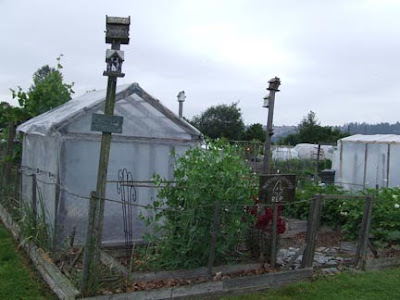
We learned that it doesn't take long for wax moths to hatch when you store your comb in rubbermaid tubs, so I put a sticky trap in the tub with a moth pheramone, which works quite well. Or you could freeze your comb. I'm very proud of the little funnel I made above by cutting a mineral water bottle in half. This way you get the pollen in the honey.

Jean used her jelly bag, another ingenious way to filter the honey. You just have to be patient as it drips down and this is best done in the hot sticky weather we're having.


Here you can see some of the different colors of pollen after the wax has been scraped off the plastic frame. (Let it be known that we hate plastic frames.)

Here's some of the wax waiting to be melted down.
 We learned that it doesn't take long for wax moths to hatch when you store your comb in rubbermaid tubs, so I put a sticky trap in the tub with a moth pheramone, which works quite well. Or you could freeze your comb. I'm very proud of the little funnel I made above by cutting a mineral water bottle in half. This way you get the pollen in the honey.
We learned that it doesn't take long for wax moths to hatch when you store your comb in rubbermaid tubs, so I put a sticky trap in the tub with a moth pheramone, which works quite well. Or you could freeze your comb. I'm very proud of the little funnel I made above by cutting a mineral water bottle in half. This way you get the pollen in the honey. Jean used her jelly bag, another ingenious way to filter the honey. You just have to be patient as it drips down and this is best done in the hot sticky weather we're having.
Jean used her jelly bag, another ingenious way to filter the honey. You just have to be patient as it drips down and this is best done in the hot sticky weather we're having.
 Here you can see some of the different colors of pollen after the wax has been scraped off the plastic frame. (Let it be known that we hate plastic frames.)
Here you can see some of the different colors of pollen after the wax has been scraped off the plastic frame. (Let it be known that we hate plastic frames.) Here's some of the wax waiting to be melted down.
Here's some of the wax waiting to be melted down.

























